11 Healthiest Large Dog Breeds (With Photos), Including BIG Dogs
Our dogs have become part of our family, and it is challenging when they become ill. We want the very best for our canine companions.
We can feed them healthy food and ensure they get lots of exercise and love, but sometimes their health is affected by genetics. Large breed dogs tend to have more health problems at a younger age compared to small breeds.

Many large dog breeds have certain health concerns, but we will discuss some considered healthy breeds. Potential pet owners should consider life expectancy and choose from the healthiest large dog breeds.
Here are 11 dog breeds that have the fewest health issues.
1. Siberian Husky
You can recognize a Siberian Husky by its startlingly light blue eyes.
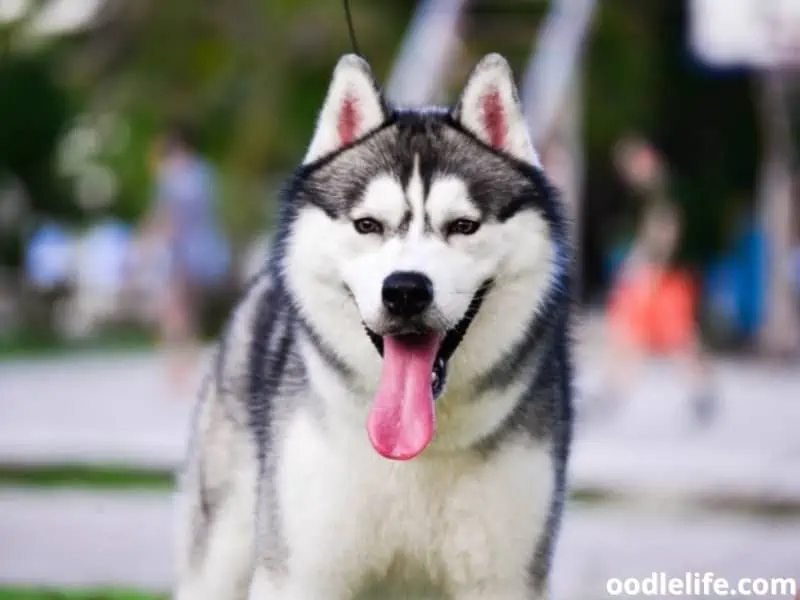
This breed is very affectionate with its people. Owners must ensure regular exercise for these dogs because they are very energetic.
This large dog breed has no significant health concerns. There are some minor health issues concerning their eyes later in their life. These dogs typically live to be about 12 years old.
2. Alaskan Malamute
The Alaskan Malamute is known for its stamina. They are hardy dogs who are friendly and outgoing.
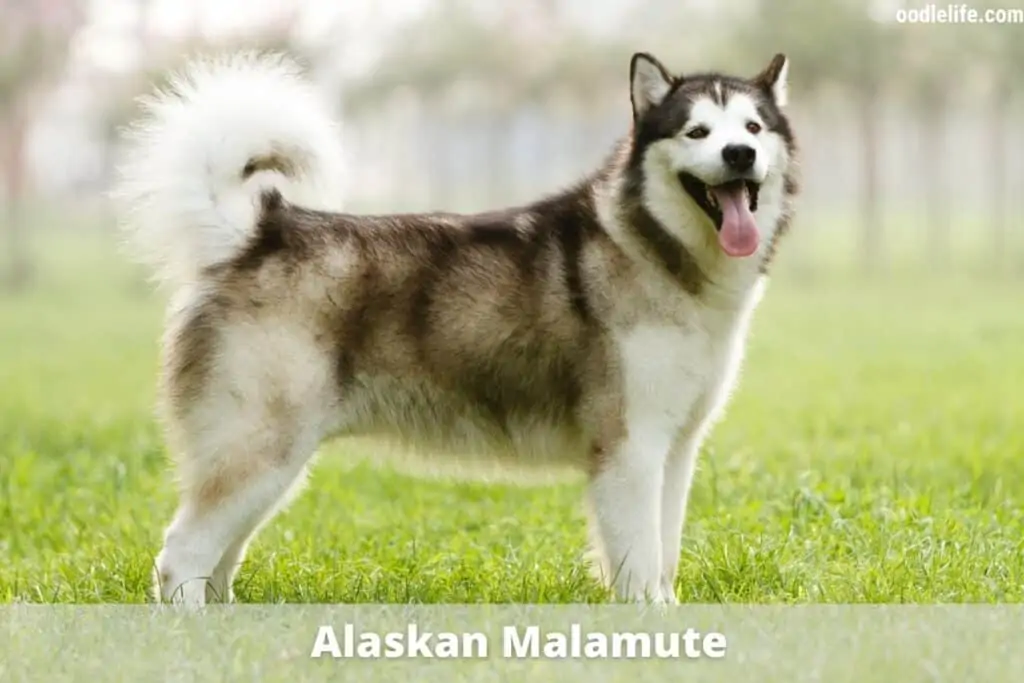
This breed is excellent with children but could be better with other small animals. You will have to train your Alaskan Malamute not to chase small cats and dogs.
You will have to commit to a regular grooming routine for your Alaskan Malamute as they require consistent brushing to prevent tangles in their coat.
These dogs are relatively healthy and have a life expectancy of about 13 years.
3. German Shepherd
Many consider the German Shepherd one of the smartest dogs, and they’re also one of the healthiest large dog breeds. They are loyal and energetic pets who are known for their courage.
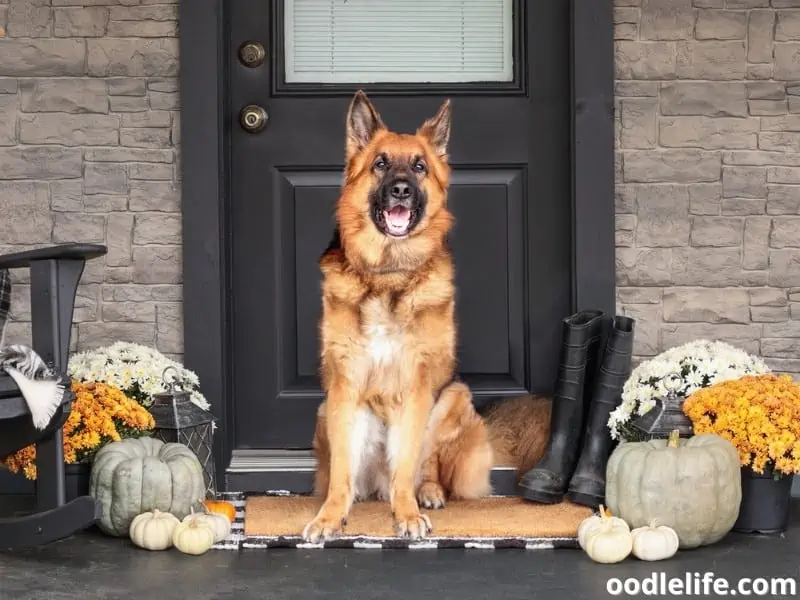
These dogs make the ideal family pet as they are easy to train.
The average life span of a German Shepherd is 11 years. They have very few health concerns, but you can ensure that your pet reaches his golden years by feeding him healthy food and exercising. Regular visits to the veterinarian will also help keep your dog healthy and happy.
4. Australian Shepherd
Australian Shepherds are a herding breed that does best when they are working. These high-energy dogs require a great deal of exercise daily, and they do best with activities like a brisk game of frisbee.
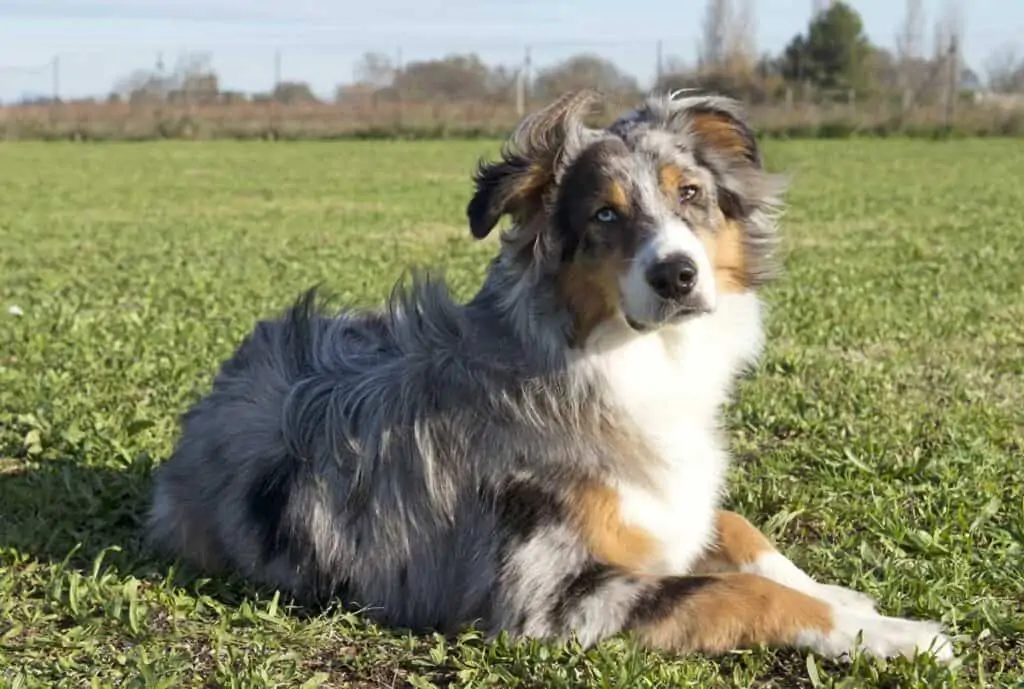
This breed of dog does exceptionally well when they have a job or a task. They excel at agility or obedience training.
Australian Shepherds are a great addition to any active family. These dogs like to herd, so they will try to establish a dominant role in the home if not trained otherwise.
This breed is typically relatively healthy, but you should always buy from a reputable breeder who can show you clearance checks. An Australian Shepherd can live up to 15 years.
5. Rottweiler
Another healthy dog breed is the Rottweiler. They have a life expectancy of 10 years.
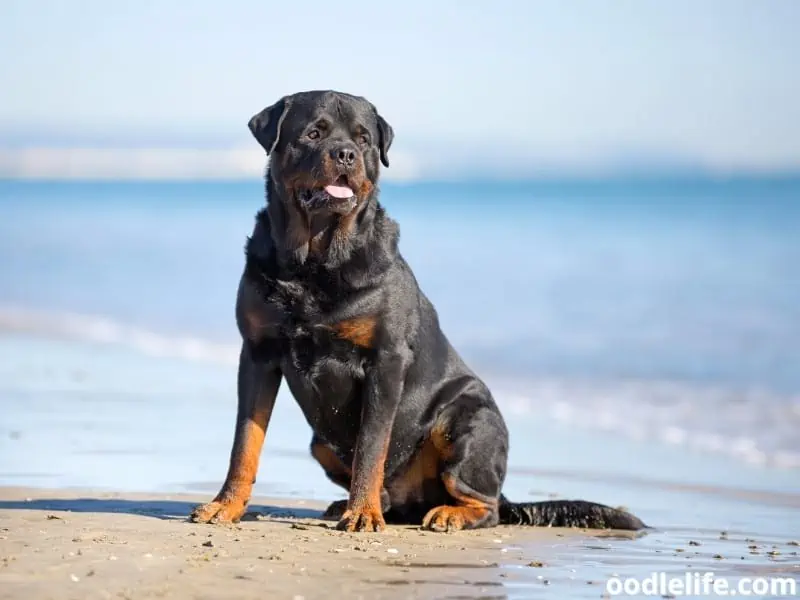
Rottweilers are big and powerful animals, requiring an experienced owner who can be very firm with their training.
These animals have earned a negative reputation as being dangerous. This is unfortunate because if owners train and socialize their Rottweiler, they are playful and loyal companions, and Rottweilers make lovely family pets when appropriately trained.
Rottweilers love to be with their humans and do poorly when left alone for long periods.
Due to their size, some owners tend to overfeed these dogs, and they like to eat. You must monitor your Rottweiler’s food intake and ensure proper exercise to prevent obesity.
6. English Springer Spaniel
The English Springer Spaniel is an energetic working dog. These dogs are very intelligent and easy to train, and English Springer Spaniels require much exercise.

English Springer Spaniels enjoy being with their humans and can become destructive when left alone for long periods. They can bark excessively to show their displeasure.
These dogs are not ideal guard dogs, and they will bark to alert of an intruder but will settle down quickly and look for affection.
You should note that these dogs often urinate when excited. These accidents can happen when you come home, and the dog becomes overly excited. You can prevent this by making your arrivals as stress-free as possible.
Wait for a few minutes before giving your dog attention.
Many pet owners have enjoyed a Springer’s company for up to 14 years. These dogs make excellent family pets, but you must socialize them from an early age.
7. Greyhounds
Greyhounds are known for their speed. They can read speeds up to 45 miles per hour, and people often race these sleek animals. You can welcome a Greyhound puppy into your home or consider adopting a retired Greyhound.
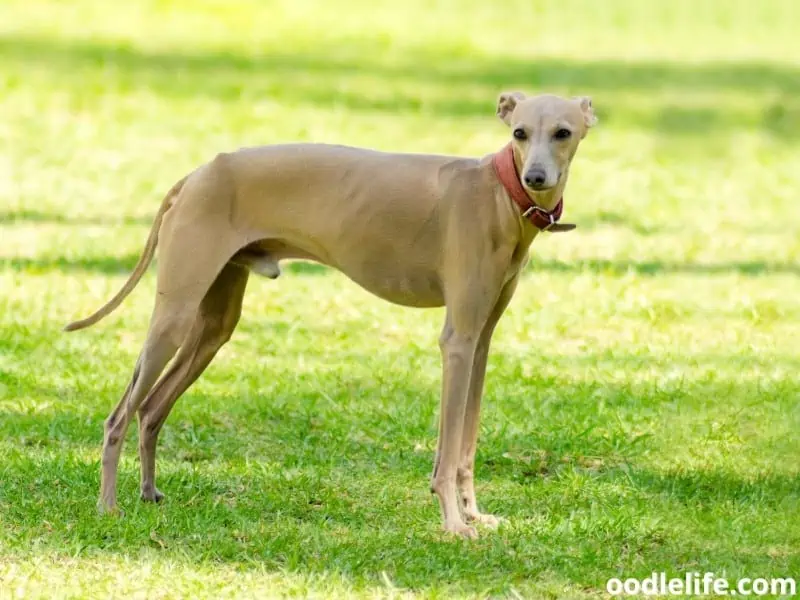
Their thin coats offer little protection against cold weather. You will often see Greyhounds wearing snuggly coats when walking with their owners.
These healthy dogs are energetic and very affectionate; owners can expect them to live about 13 years.
8. German Pinscher
German Pinschers are incredibly intelligent. They require an experienced dog owner that can be firm. Consistent training should start very early.
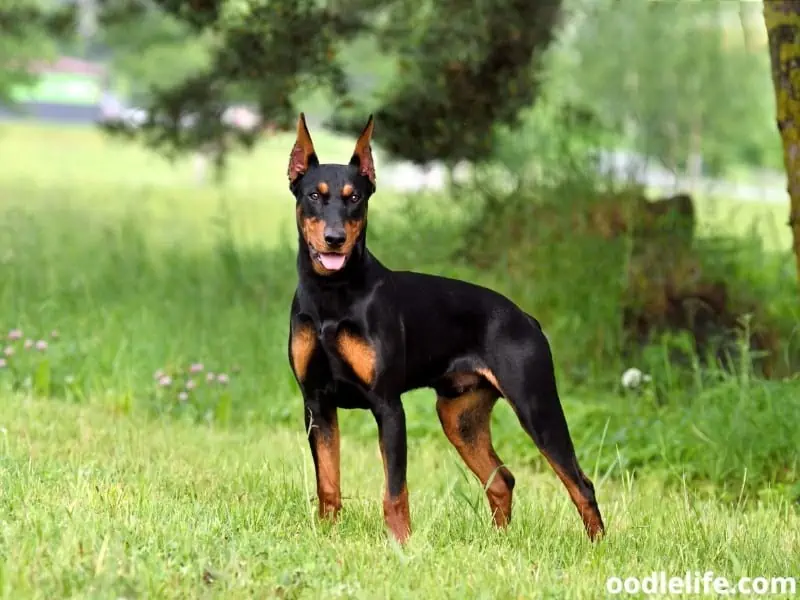
This breed is fiercely loyal and protective. German Pinschers do best in homes with older children because of their overpowering nature.
German Pinschers are healthy dogs that can live up to 14 years. They make excellent guard dogs with the proper training.
9. Belgian Malinois
The Belgian Malinois is similar in appearance to German Shepherds and is an intelligent working dog.
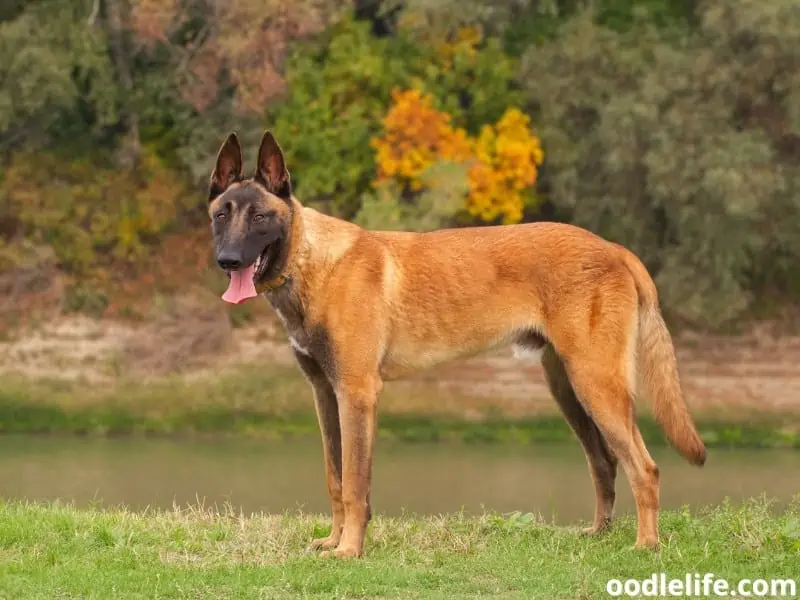
These dogs are very sensitive and require a gentle training regime. Training and socializing these dogs is crucial, making them good family pets.
Belgian Malinois are energetic and require a great deal of exercise. They excel at tracking, agility, and other protection sports.
These healthy dogs can live up to 14 years old.
10. Labrador Retriever
The Labrador Retriever’s sweet and gentle temperament makes them excellent therapy dogs.
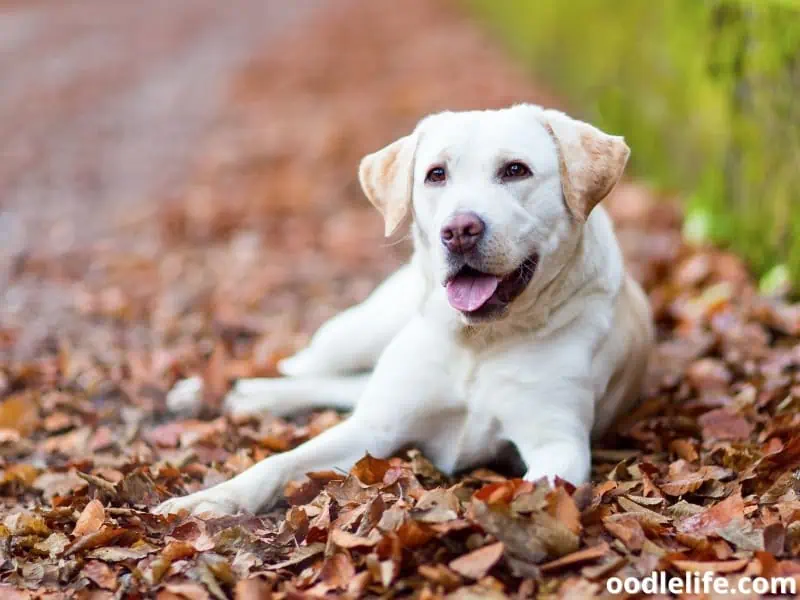
These dogs are energetic and require regular exercise daily.
Labrador Retrievers are playful and outgoing animals that thrive in a family setting.
This breed loves to eat, so it is vital to monitor their food intake to prevent obesity. Owners can train them with food.
Labrador Retrievers are excellent with people and other animals, which makes them less than ideal as guard dogs. They will be friendly and affectionate to any intruder.
These healthy dogs can live up to 13 years.
11. Border Collie
Border Collies are intense and energetic dogs. These herding dogs require tasks that keep them stimulated. A Border Collie is an excellent choice for an owner looking for a partner in canine sports.
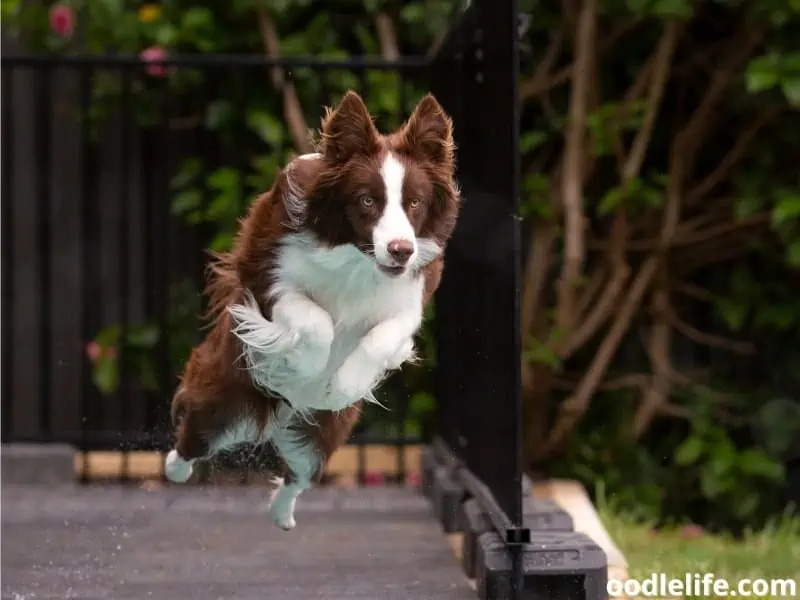
These dogs are extremely sensitive and respond well to training. It is nearly impossible to train a Border Collie not to herd, and it is vital to redirect his herding instinct.
A Border Collie can make wonderful family pets when well-trained and socialized.
These healthy dogs can live up to 13 years.
Final Thoughts
Our canine friends often become a significant part of our lives, and we want to enjoy them for as long as possible. Choosing one of the healthiest large dog breeds can ensure you get the most time with your pup. Of course, owners should provide the best care possible, along with regular veterinarian visits, to make their dog’s life even longer.